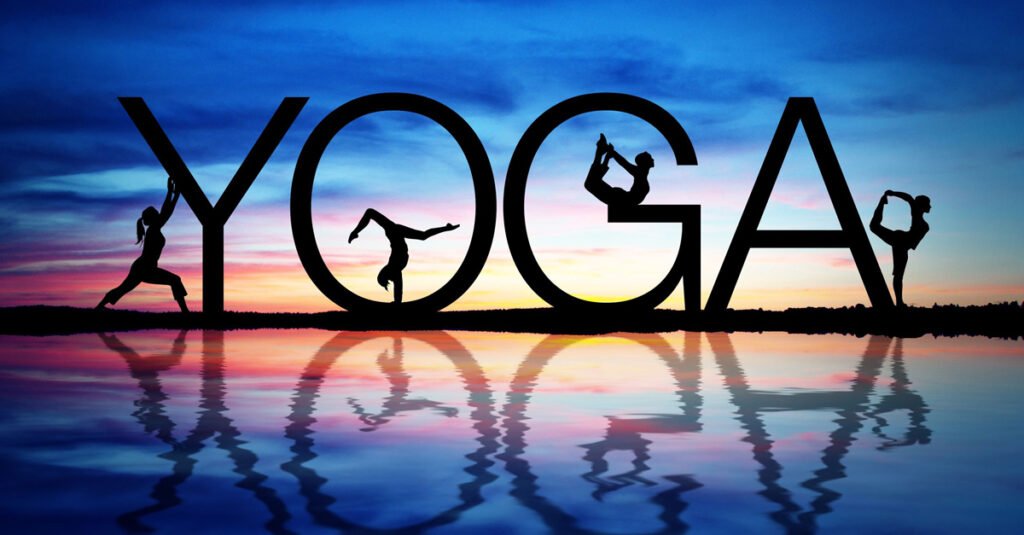
“I think, that when you start doing yoga and you start listening to yourself, you stay in yoga, because it is so deep.”
– Petri Raisanen
What Yoga is ?
Yoga meaning is to unite with the self or become one. The word Yoga which means to Yolk or go within the center. Where did yoga originated ? It is the group of physical, mental and spiritual practices which originated in ancient India. In simple terms, it is practice of uniting the body, thought and breath. Yoga is an ancient art which gives a treasure of knowledge on how to exercise your mind and body to unlatch the full human potential. Some best and ultimate yoga poses and tips can be a boon for a healthy lifestyle.
There are three key components of yoga:
- Asana – the process of static and dynamic movements of body to align and balance the physical components.
- Prana – the process of synchronizing whole body and mind activities with the breath.
- Dhayana – the process of focusing thoughts, enlightening awareness and to make mind relax and sharp.
Yoga is the origin of all physical exercises which includes flexibility routine, strength, conditioning, balance, cardiovascular training and mind body fitness. It influences the nervous, respiratory, reproductive, cardiovascular and digestive system.
Keep your Diabetes Under Control With our Specialty Meals!Asana‘s
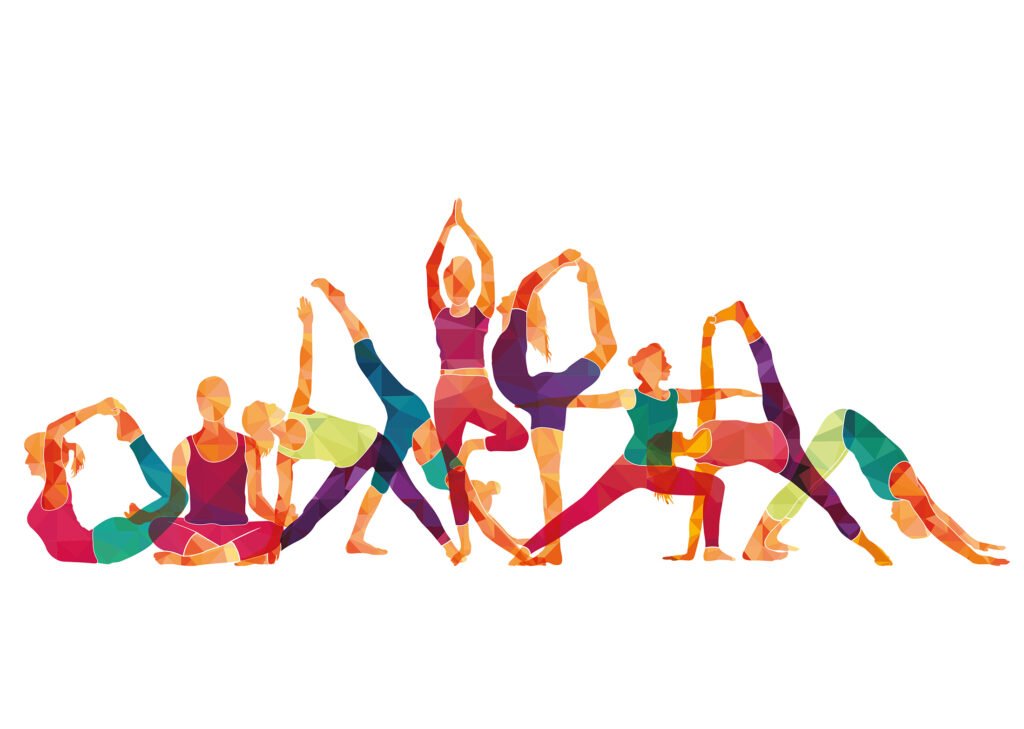
Asanas meaning in yogic culture is a body posture which is steady and comfortable. Asanas give spiritual, mental and physical healthcare benefits in many traditional texts. Studies have provided evidence that asana improves strength, flexibility and balance. It reduces stress and many diseases such as asthama, diabetes. There are many types and categories of Asanas which are as follows.
1) Relaxation Asana
Relaxation Asanas are asanas that should be practiced before and after the asana session and at any time when the body becomes tiered. These gives mind and body the peace or rest it badly craves for.
Child (BALASANA)
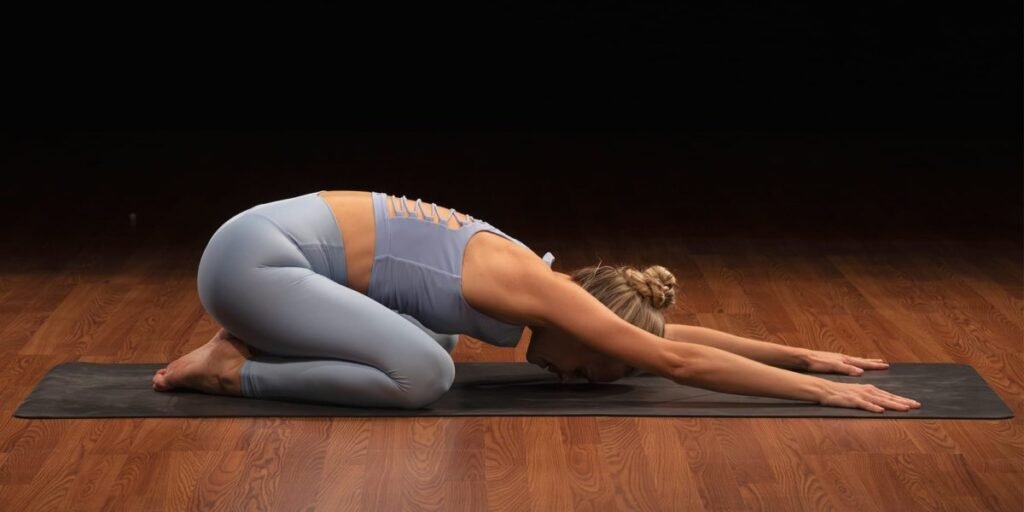
Benefits :
- Stabilizing the pelvis and hips
- Relaxes the body and mind
- Elongates the spin
- Restore energy
- Helps in digestion
Diaphragmatic Breathing (SWAS asana)
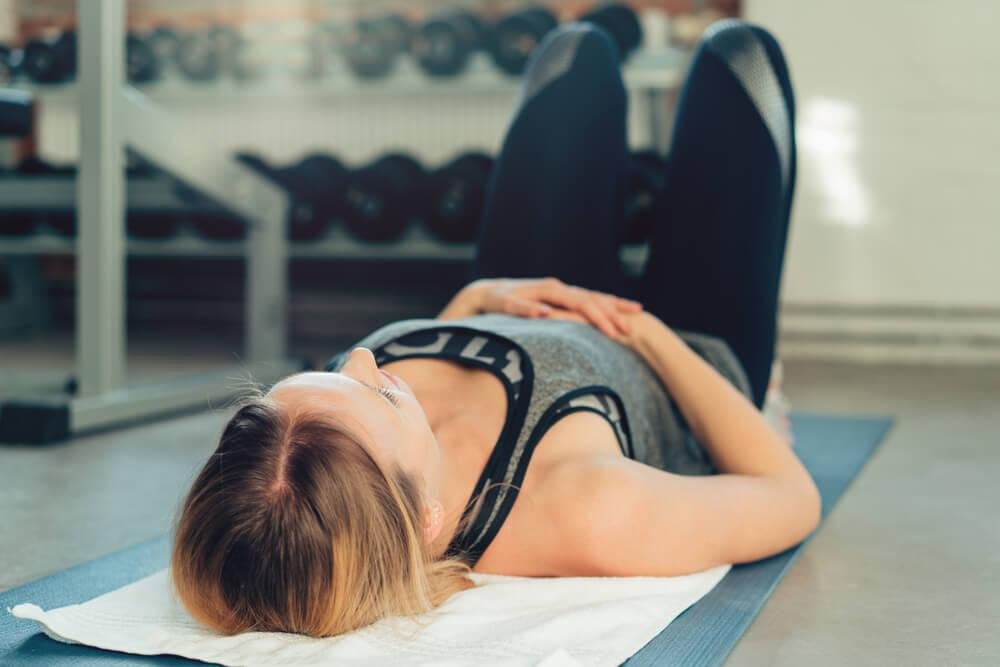
Benefits :
- Massages the abdominal organs
- Relaxes the body and mind
- Improves the process of inhaling oxygen and exhaling carbon dioxide during respiration
Corpse (Shavasana)
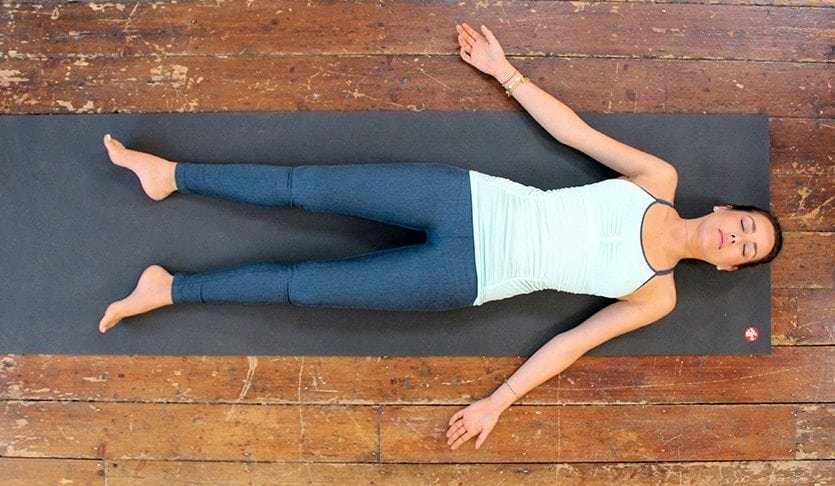
Benefits :
- Relaxes the body and mind
- breathing improvement
- Decreases stress and tension
Alternate nostril breathing (Pranayama of yoga asana)
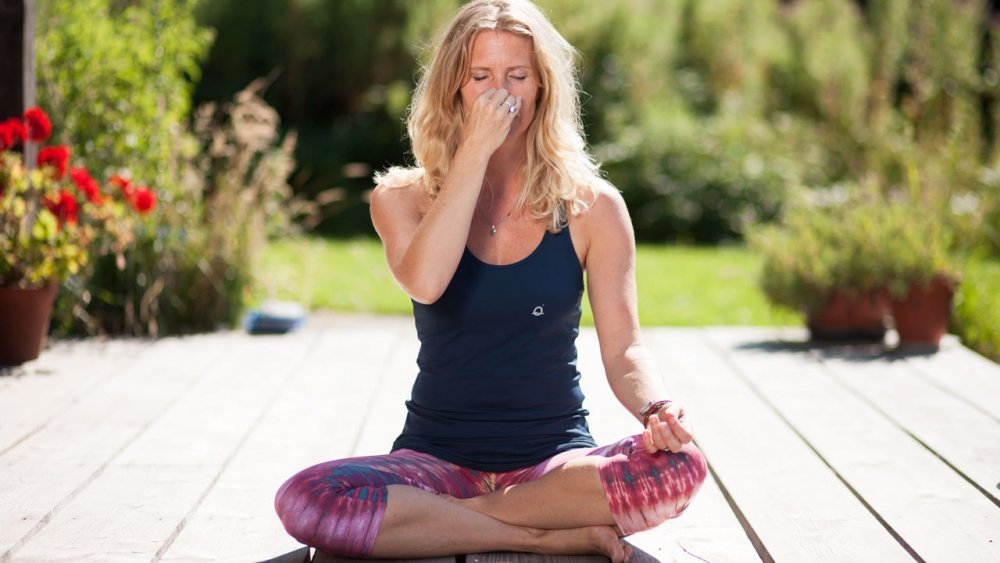
Benefits :
- Balances the natural breathing cycle
- Alleviates headache
- Increases breathing capacity
- Reduces stress
- Boosts mental and physical balance without causing strain and pain
2) Sitting Asana
These are the asana done in sitting position. This is primary asanas which you can do after relaxation asanas.
Easy Sitting / Lotus (SUKH/PADAM asana)
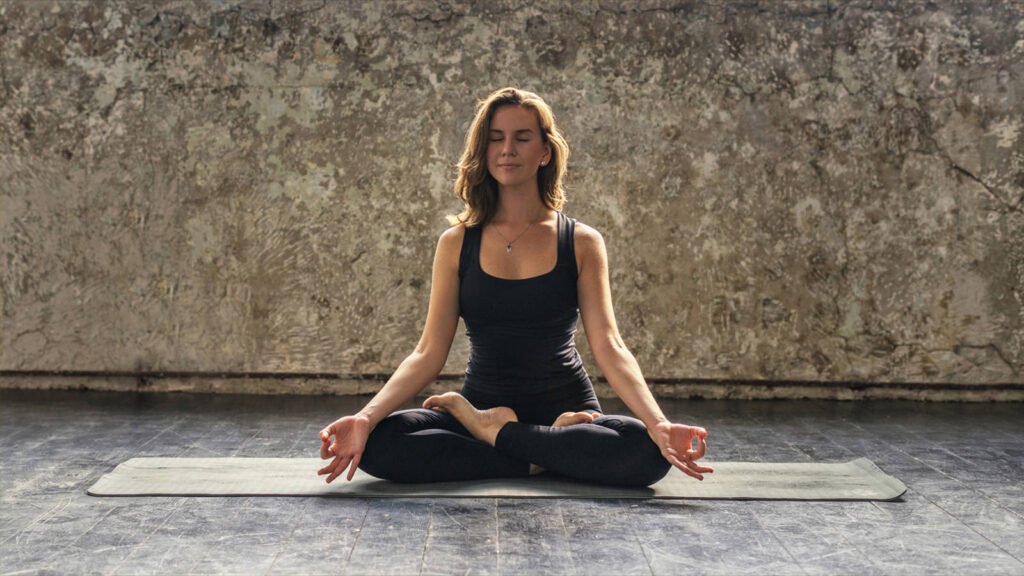
Benefits:
- Stabilizes the hips and pelvis
- Elongates the spine
- Increases breathing capacity
- Facilitates mental and physical balance
Seated butterfly (TITTALI asana)
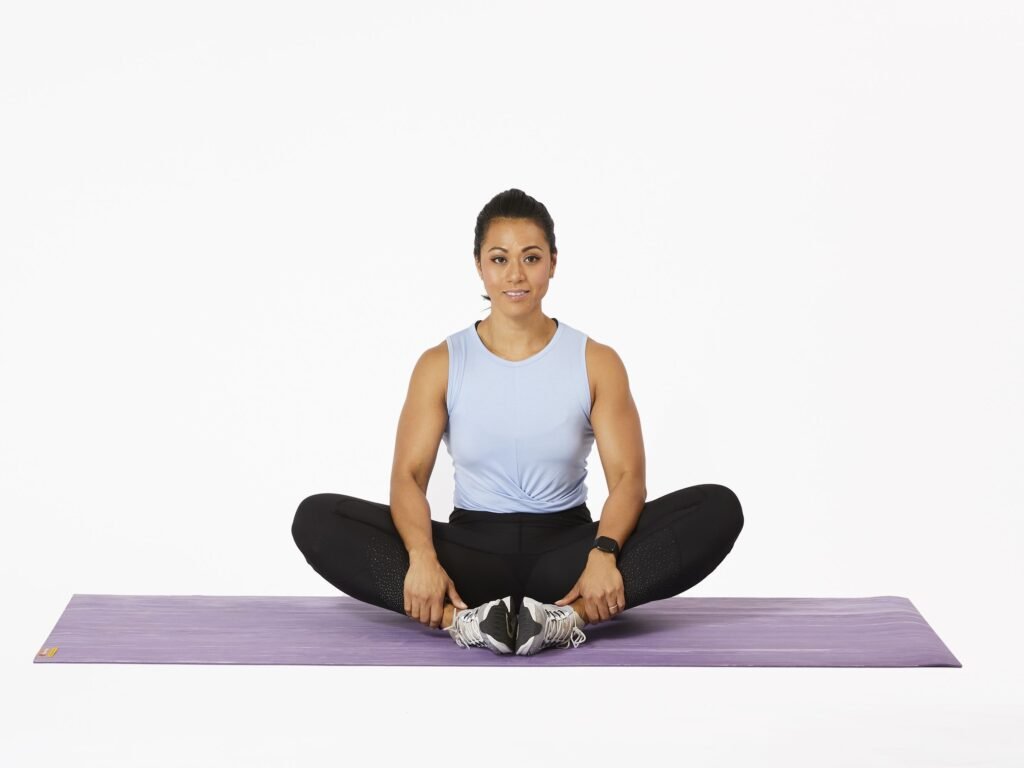
Benefits:
- Stabilizes the pelvis and mobilizes the spinal joint
- Helpful in menstrual disorders list and pregnancy
- Improve upper back posture
- Massages the abdominal organs
Seated forward fold (Paschimottanasana)
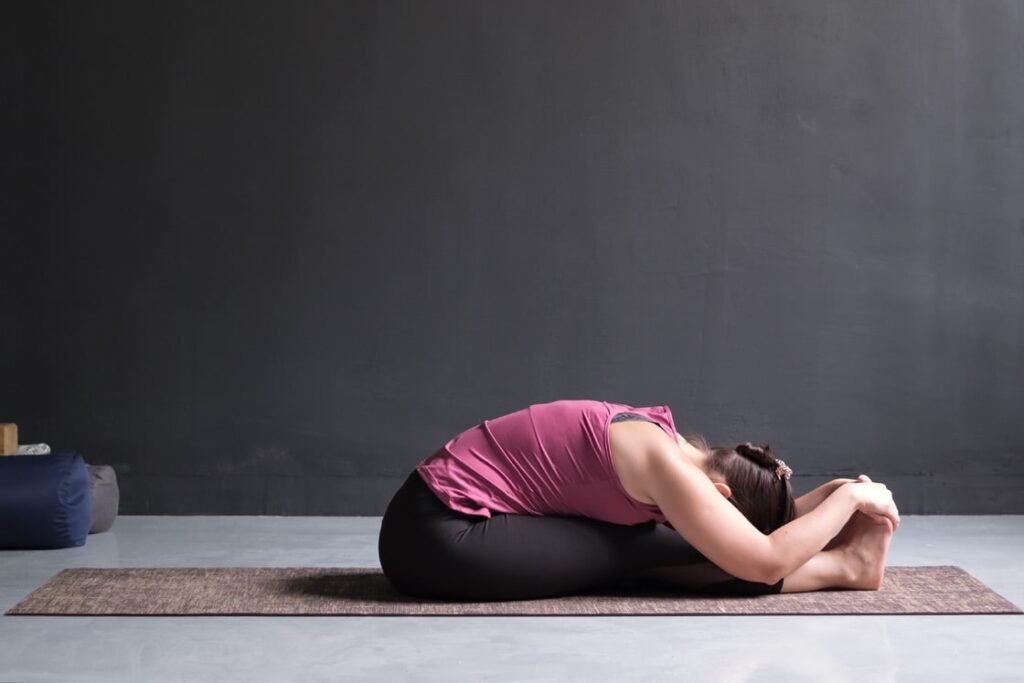
Benefits:
- Stretch the hamstrings
- Massages the abdominal organ
- Elongates the spine
- Increases the flexibility of the hip joints
Seated hip opener (Upavistha Shroni Prasarita asana)
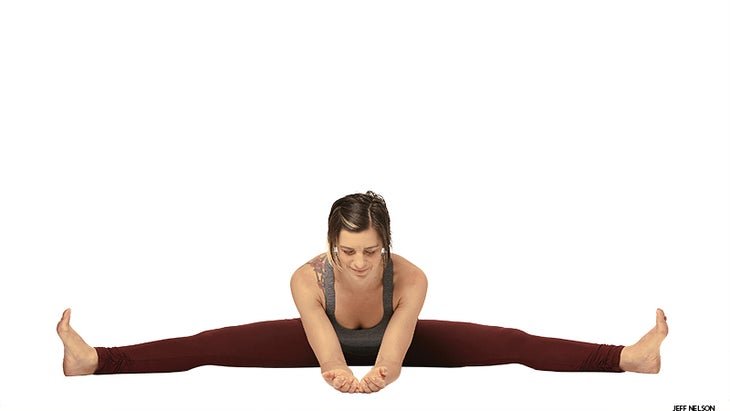
Benefits:
- Stabilizes the hips and pelvis
- Stretches the hamstrings
- Open the chest cavity
- Opens the hip joints
3) Kneeling Asana
Kneeling asanas are asanas performed on knees.
Cow yoga pose / Cat pose (Marjariasana)
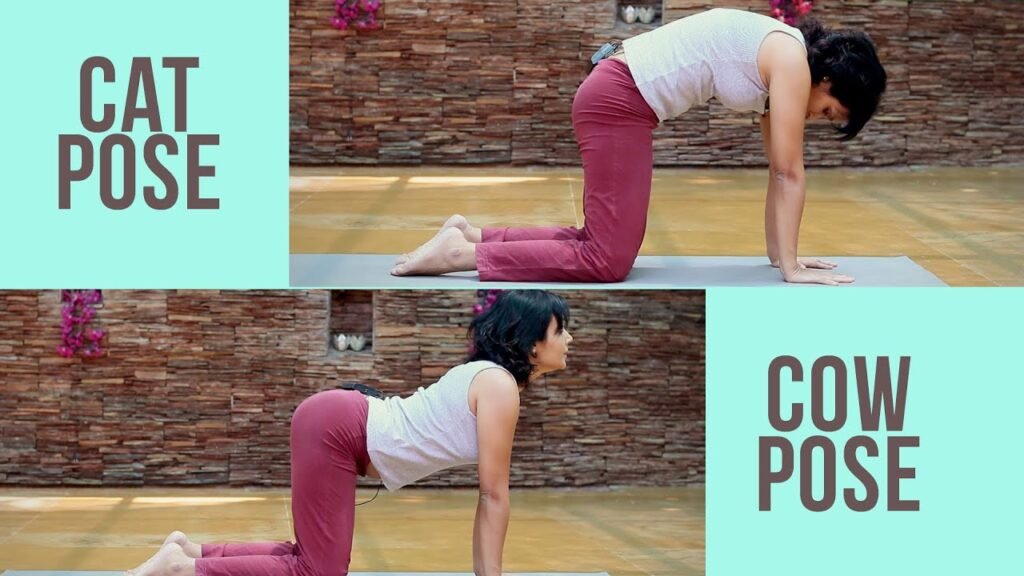
Benefits:
- Increases the flexibility of spine
- Decreases the lower back tension
- Enhances the integrity of core
- Stabilizes pelvis and shoulder joints
- Helps for relief in menstruation cramps
Striking cobra (Shashank Bhujang asana)
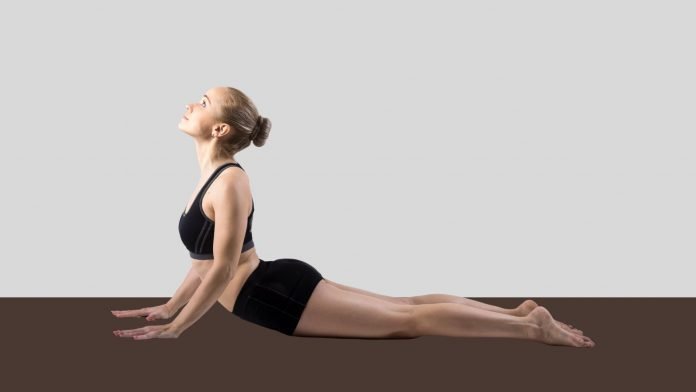
Benefits:
- Opens and stretches chest cavity
- Aligns upper body posture and strengthens it
- Enhances breathing capacity
- Increases flexibility of spine
- Stretches abdominal contents
Tiger (Vyaghra asana)
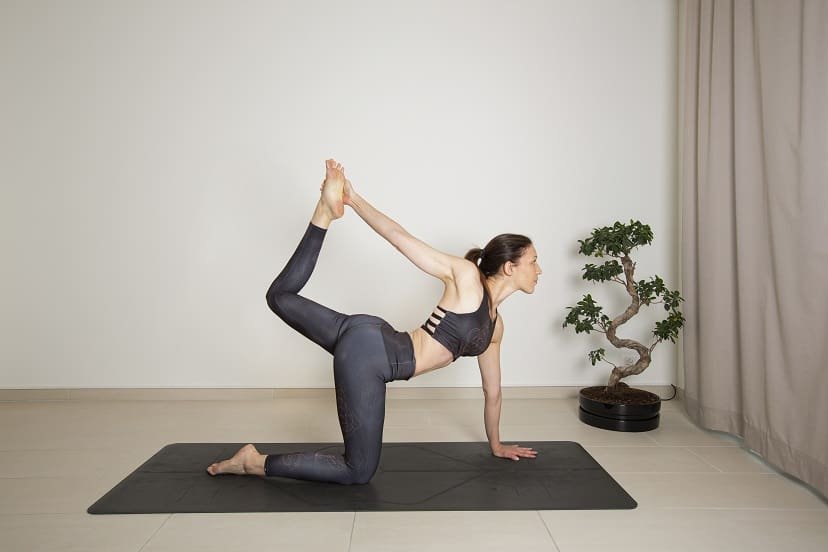
Benefits:
- Increases flexibility of spine
- Mobilizes the hip joints
- Enhances the integrity of core
- Strengthens and gives relief to the gluteal muscles pain
- Stabilizes the pelvis and shoulder
Sitting on knees (Vajrasana)
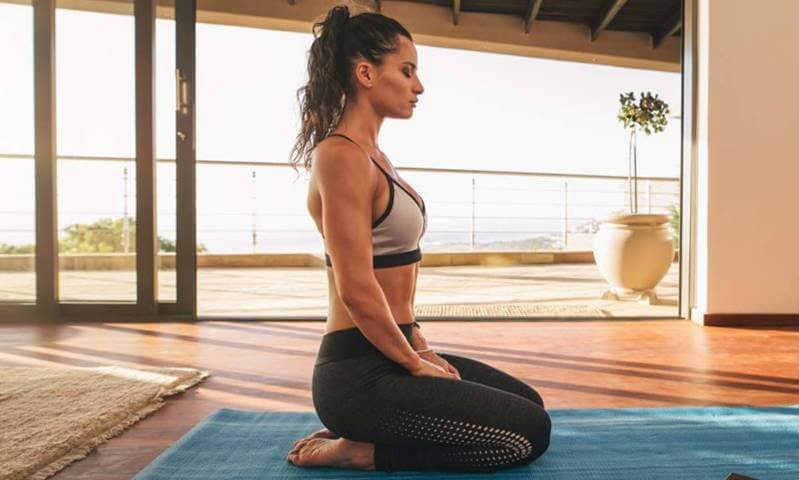
Benefits:
- Stabilizes the hips and pelvis
- Helps with digestion
- Helps with Hernias in mens and women, for Hemorrhoids treatment
- Stretches muscles of the feet
- Assists in labor and labor pain
- Helps in menstrual cramps relief
Camel pose yoga (Ustrasana)
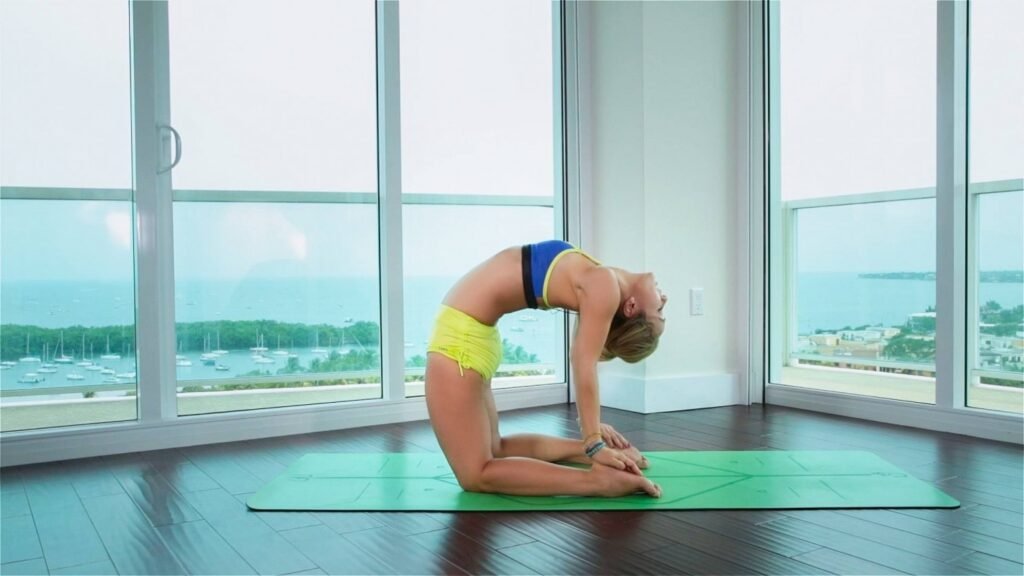
Benefits:
- Stretches the spine
- Increases flexibility of body
- Stretches the abdominal contents
- Stretches for the hips
- Improves shoulder posture
4) Standing Asanas
These are yoga performed while in standing position.
Half moon lunge (Ardha Anjaney asana)
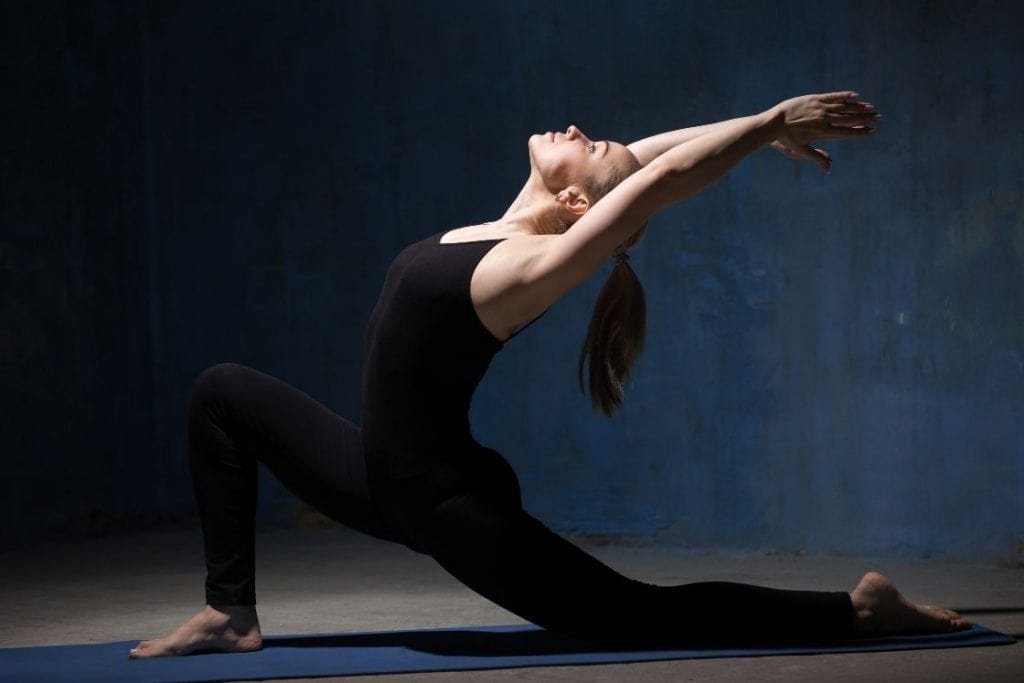
Benefits:
- Builds lower body strength
- Opens the hips
- Focus energy in one direction
- Improves body balance
Five pointed star (PANCH TARA asana)
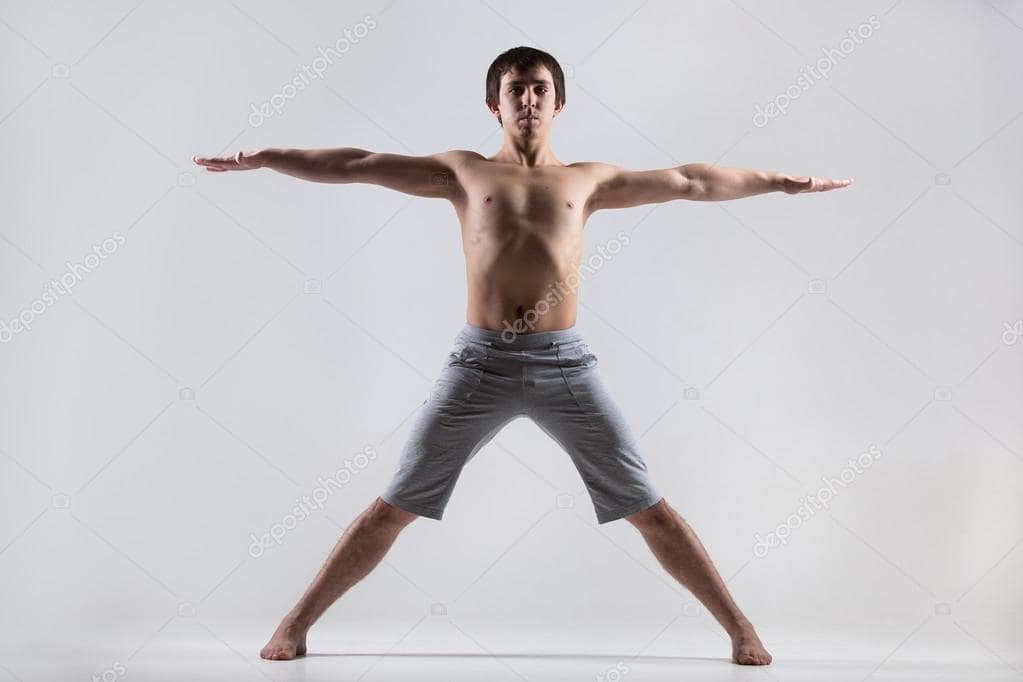
Benefits:
- Stabilizes the pelvis and core
- Improves posture
- Stretches the upper body
- Develops muscle strength of shoulders and feet
Lunges (Ashwasan Chalan asana)
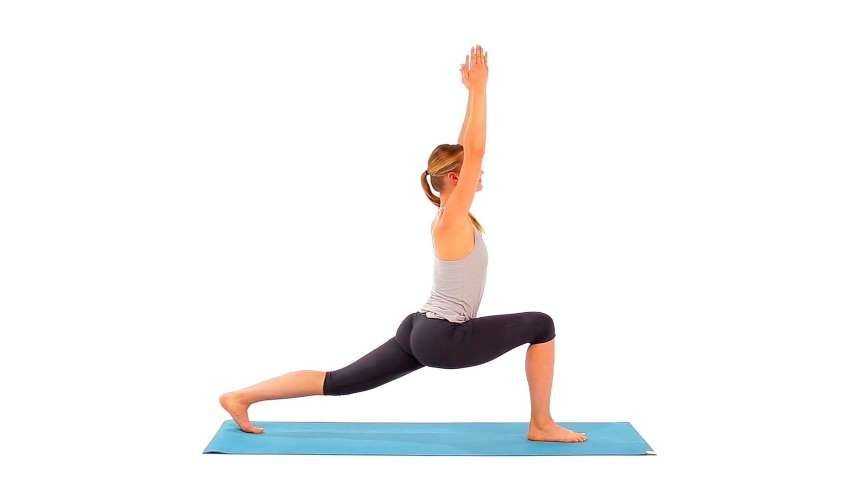
Benefits:
- Stabilizes the pelvis and strengthens abdominal muscle
- Helps in full body stabilization and coordination
- Develops the arches of the feet
- Improves upper body posture
Reverse Triangle (Parivritta Trikon Asana)
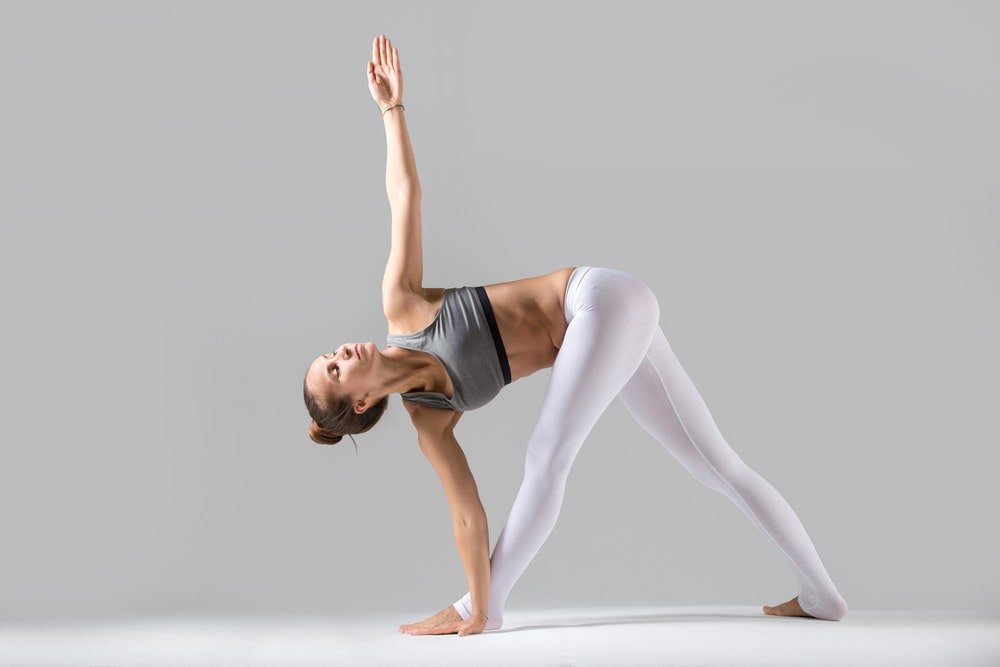
Benefits:
- Stretch the hamstrings and spinal muscles
- Stimulates it and prevents the nervous system disorders
- Strengthens the pelvic region
- Opens up the upper spine, chest and shoulder blades
Squats (KAKI asana)
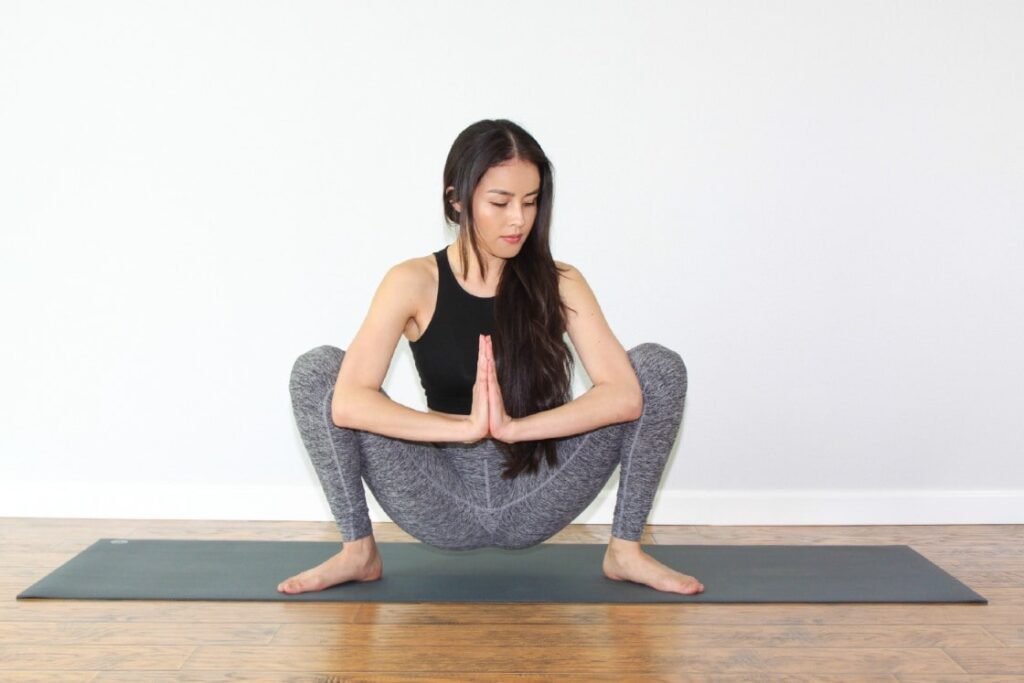
Benefits:
- Stabilizes the pelvis and core
- Builds strength in the lower back
- Strengthens the glutes
- Improves metabolic system
- Helpful in child birth
Balance asanas
Balance asanas are an extra effort towards yoga for balancing and maintaining the body position.
Tree Pose (Vrksasana)
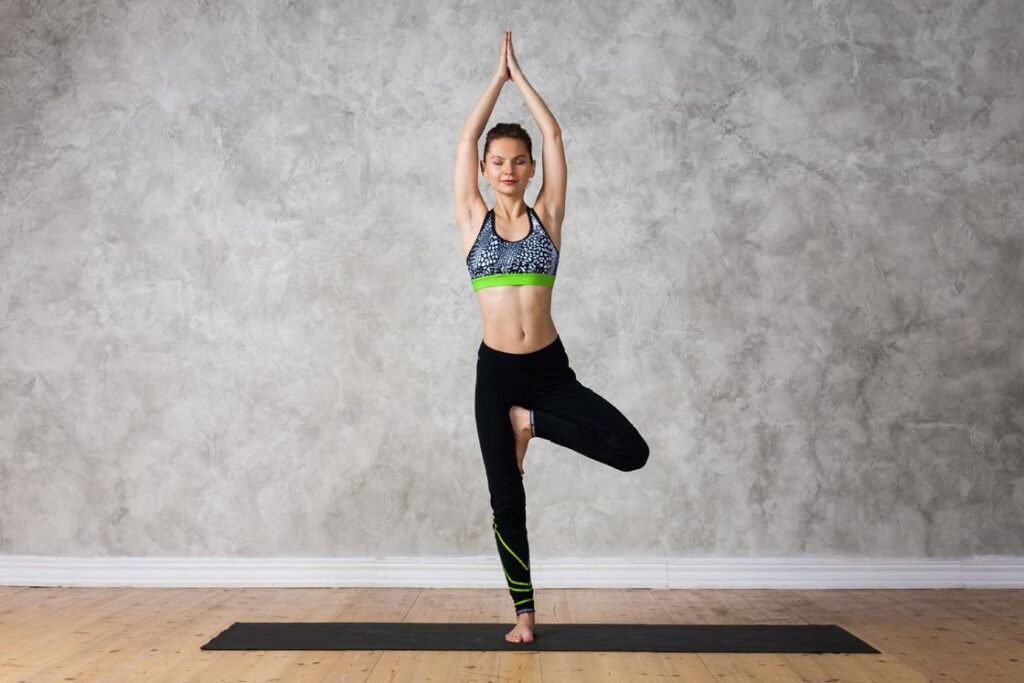
Benefits:
- Establishes balance and coordination
- Improves posture
- Develops strength in muscles of the ankles and feet
- Stabilizes the hips and pelvic region
Dancer Pose (Natarajasana)
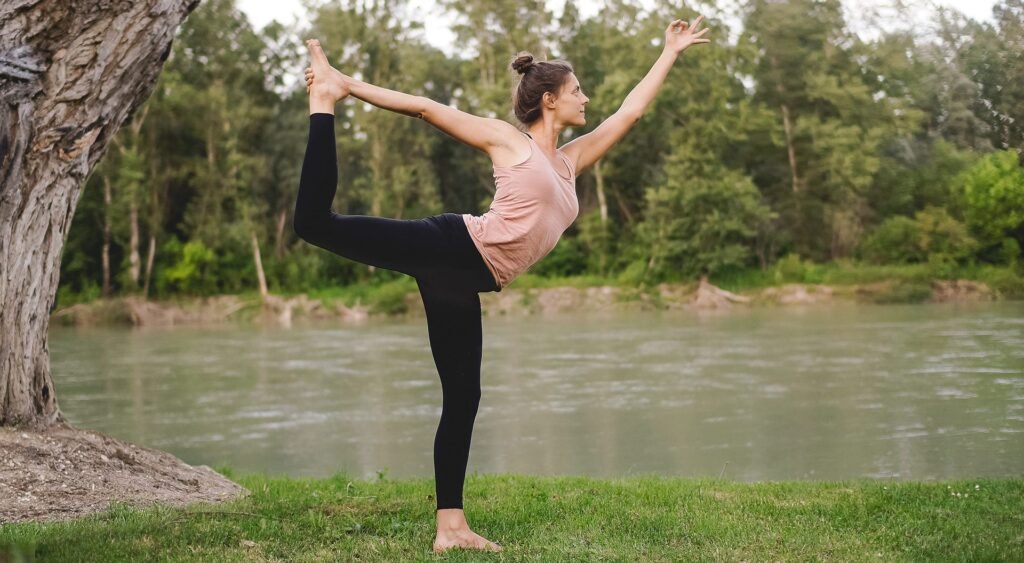
Benefits:
- Establishes balance and coordination
- Improve posture
- Develops strength in muscles of the ankles and feet
- Stabilizes the hips and pelvic region
- Stretches the hamstring muscles
- Increases strength with stability
Patient Crane (Bakdhyan Asana)
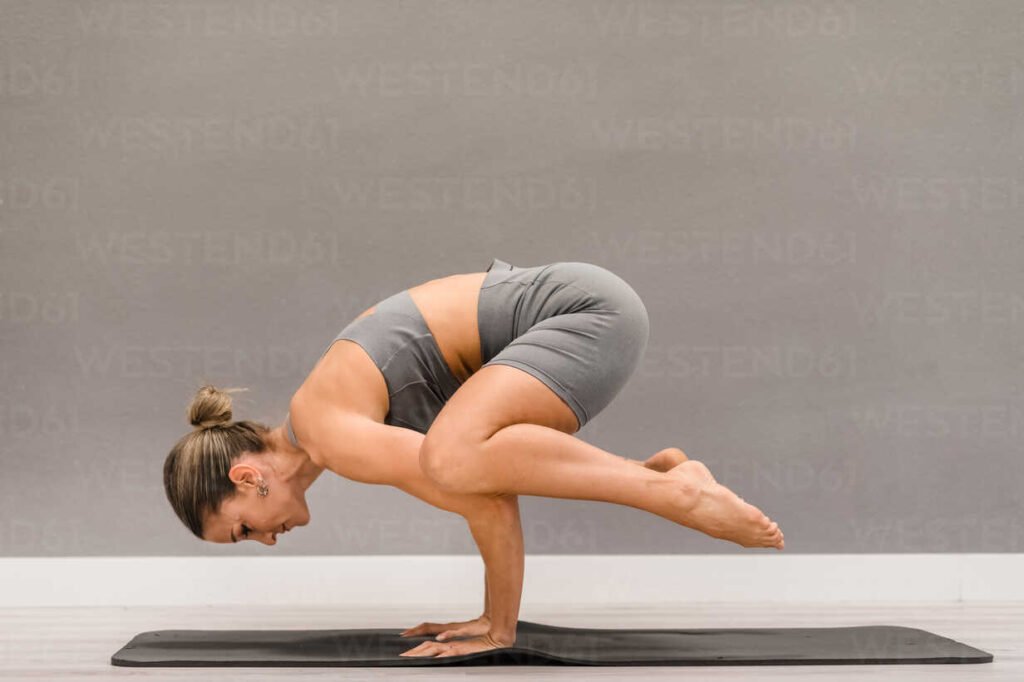
Benefits:
- Builds strength in upper body
- Develops balance and coordination
- Improves the metabolic and vascular system
- Stabilizes the hips and pelvis
Side angle pose (Utthita Parsvakonasana)
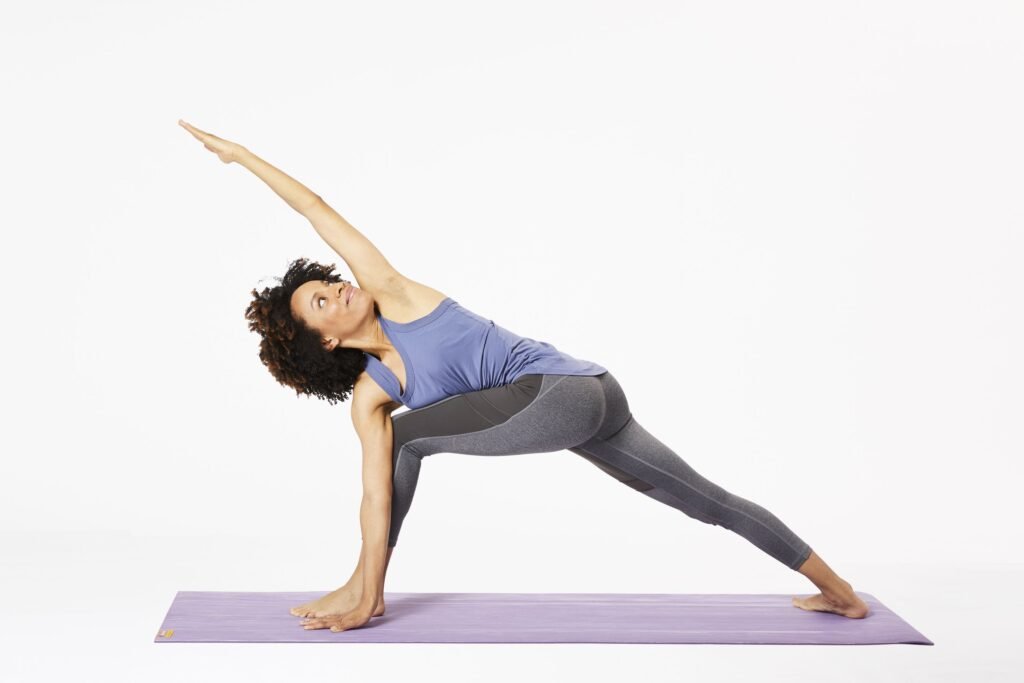
Benefits:
- Strengthens the transverse abdominal muscle
- Develops stability in hips and shoulders
- Develops full body stabilization and coordination
- Improves full body muscle balance
Supine asanas
Supine asana are asana performed by positioning your back or spine in downward direction. This yoga asana are great way to end your yoga practice for the day
Leg Lock Pose (Supta Pawanmuktasana)
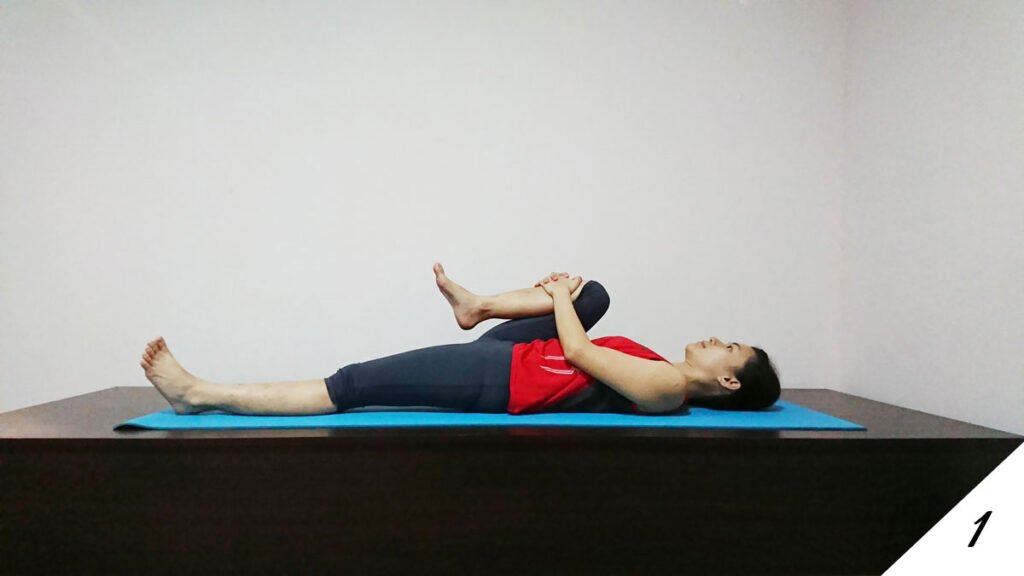
Benefits:
- Stretches the muscles in lower back
- Elongates the spine
- Massages the abdominal organs
Bridge pose yoga (Setu bandhasana)
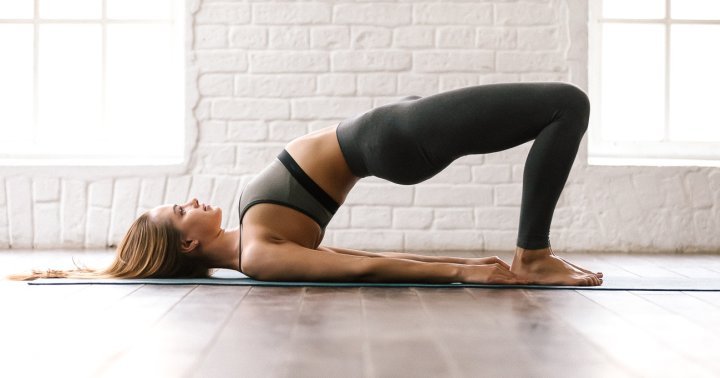
Benefits:
- Mobilizes the spinal joints
- Massages the abdominal organs
- Helpful in menstrual disorders and pregnancy
- Improves upper back and shoulder posture
Reverse table (Ardha Purvottanasana)
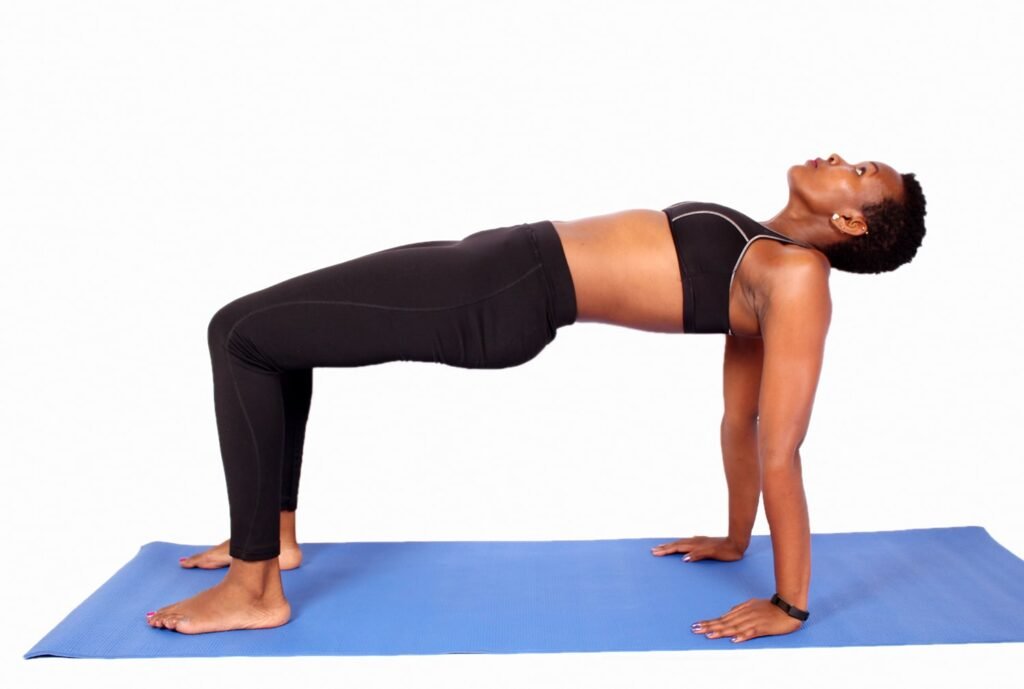
Benefits:
- Strengthens the core
- Releases the upper body tension
- Opens the chest cavity and shoulders
- Stabilizes the hips and pelvic region
Boat (Navasana yoga pose)
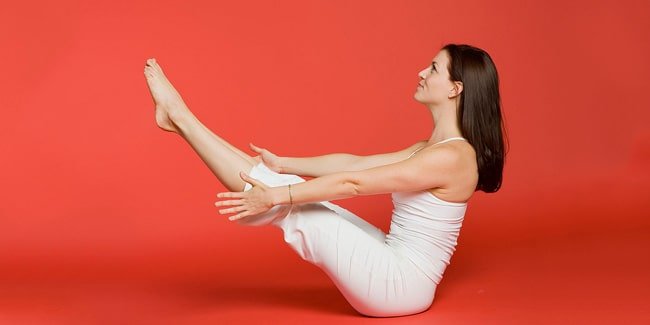
Benefits:
- Strengthens the lower back and core
- Coordinates the upper, mid and lower body strength
- Massages the abdominal organs
Prone asanas
Prone asanas are performed positioning the belly in downward direction. These yoga posture are simple and useful for the beginners.
Eight Limb Salutation (Ashtanga Namaskara asana)
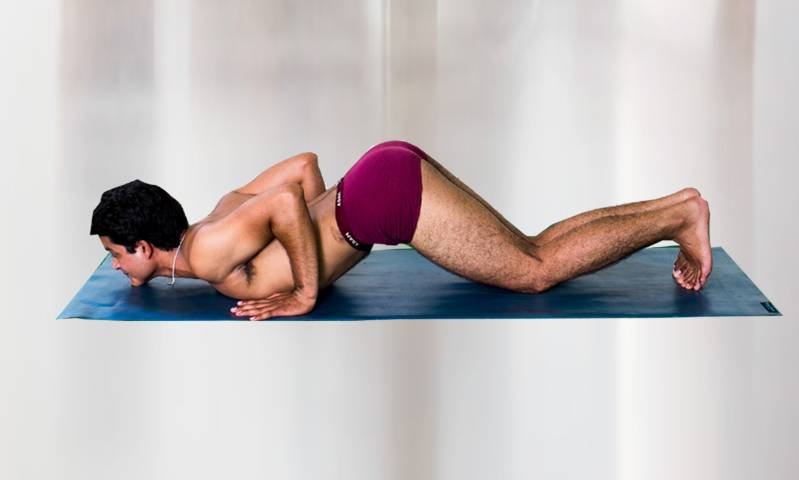
Benefits:
- Stretches and opens up the chest cavity
- Stretches the spinal ligaments and abdominal contents
- Strengthens the upper body
- Increases the breathing capacity
- Increases the stability of the pelvic region
Locust Pose (Shalabhasana)
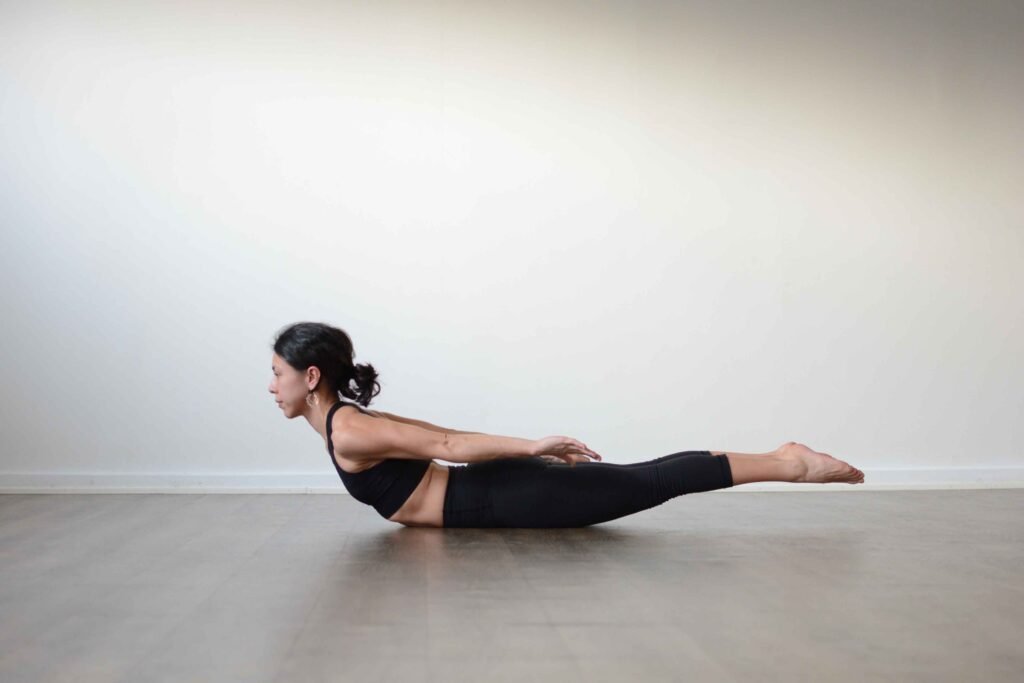
Benefits:
- Improves the upper body posture
- Stretches the chest cavity
- Decreases the tension and gives upper back pain relief
- Tones the abdomen
- Develops the muscles around the shoulder region
Superman pose (Mahapurush asana)
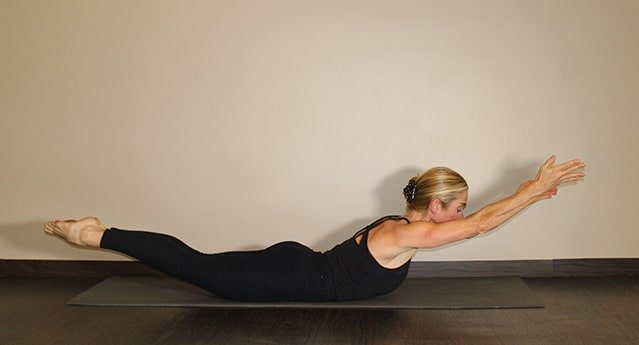
Benefits:
- Develops and stimulates the abdominal content
- Improves body and posture
- Strengthens the lower back and gluteal regions
- Increases the stability of the pelvic region
High Plank (Chaturanga Dandasana)
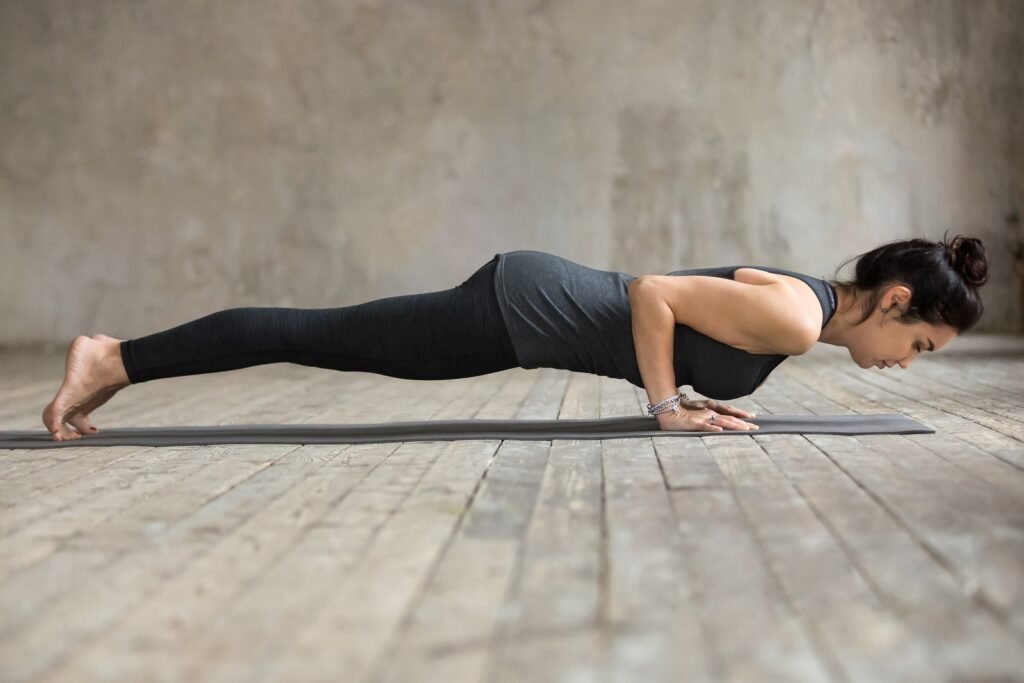
Benefits:
- Stabilizes the pelvic region
- Develops and improves stability of hips and shoulders
- Increases full body stretch, stabilization and coordination
- Strengthens the transverse abdominal muscle
Bow prone (Dhanurasana yoga)
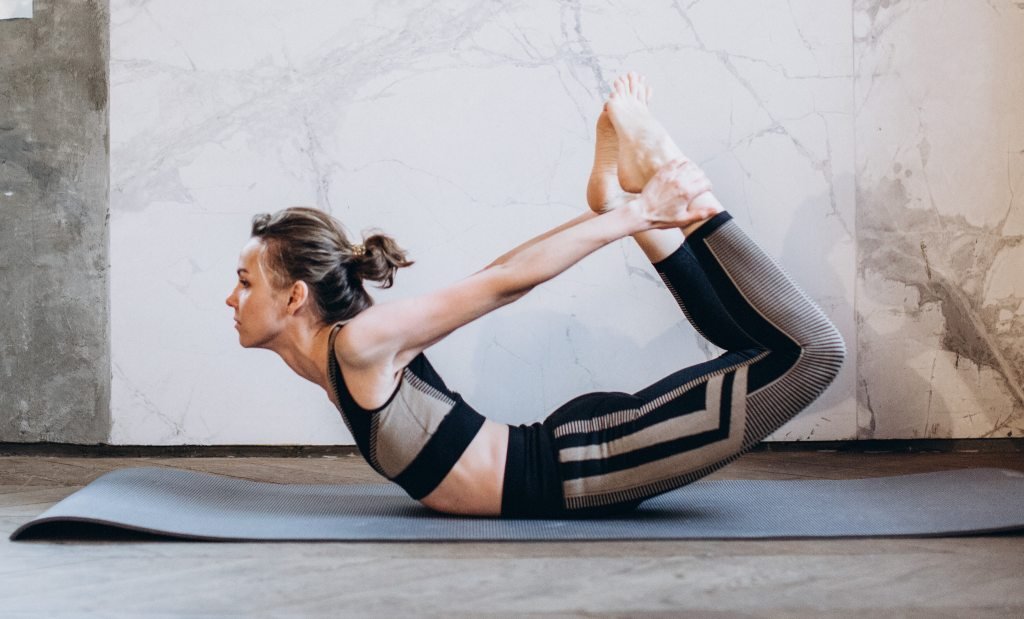
Benefits:
- Stretches the spinal ligaments
- Opens and stretches the upper body
- Aligns the spine and improves the mid-back posture
- Massages the abdominal content
